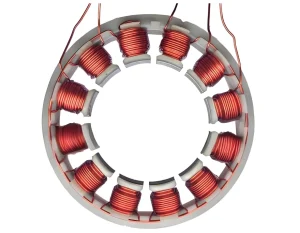
Introduction
Winding Motors in Coil Winding Processes
Winding motors types play a crucial role in coil winding processes, serving as the driving force behind the precise and efficient creation of coils for various applications. These motors provide the necessary rotational power to wind conductive wires or coils onto designated forms or bobbins, enabling the production of electromagnetic components such as transformers, inductors, and motors themselves. The performance and reliability of winding motors directly influence the quality, consistency, and productivity of coil winding operations, making them integral to the manufacturing process across industries.
Types of Winding Motors
Description and Characteristics of Brushless DC Motors for Coil Winding
Brushless DC (BLDC) motors represent a significant advancement in coil winding technology, offering several distinct advantages over traditional brushed motors. These motors operate using electronic commutation rather than mechanical brushes, resulting in smoother operation, reduced maintenance requirements, and higher efficiency. BLDC motors feature high torque-to-size ratios, making them ideal for applications requiring precise control and rapid acceleration. Their inherent reliability and longevity make them well-suited for continuous operation in coil winding machinery, contributing to enhanced productivity and performance.
Discussion on the Advantages and Applications of Stepper Motors in Coil Winding
Stepper motors are widely utilized in coil winding applications due to their precise positioning capabilities and simple control interface. These motors operate by dividing a full rotation into a series of discrete steps, allowing for accurate control of winding processes and precise coil placement. Stepper motors offer inherent holding torque, ensuring positional accuracy even when stationary, making them well-suited for applications requiring precise winding tension and alignment. Common applications include winding coils for sensors, actuators, and small-scale electromechanical devices.
Overview of Servo Motors and Their Role in Precision Coil Winding Processes
Servo motors are renowned for their exceptional accuracy, speed, and torque capabilities, making them indispensable in precision coil winding processes. These motors utilize feedback control systems to achieve precise motion control and position accuracy, enabling highly dynamic and repeatable winding operations. Servo motors offer superior performance in terms of speed regulation, torque consistency, and positional accuracy, making them ideal for applications requiring tight tolerances and high-quality winding outputs. Their versatility and adaptability make servo motors a preferred choice for demanding coil winding applications in industries such as aerospace, automotive, and medical device manufacturing.
Comparison of Winding Motors Types
Analysis of the Strengths and Weaknesses of Brushless DC, Stepper, and Servo Motors
Brushless DC Motors:
- Strengths:
- High efficiency and reliability due to absence of brushes.
- Smooth operation and low maintenance requirements.
- Compact size and high power-to-weight ratio.
- Weaknesses:
- Typically higher initial cost compared to brushed motors.
- Complex control electronics required for operation.
- Strengths:
Stepper Motors:
- Strengths:
- Precise positioning and control of winding processes.
- Inherent holding torque for maintaining position without power.
- Simple control interface and ease of use.
- Weaknesses:
- Limited torque output at high speeds.
- Susceptible to resonance and step loss at certain speeds.
- Strengths:
Servo Motors:
- Strengths:
- Exceptional accuracy, speed, and torque capabilities.
- Precise motion control and position feedback.
- High dynamic response and repeatability.
- Weaknesses:
- Higher initial cost compared to other motor types.
- More complex control systems and tuning requirements.
- Susceptibility to environmental factors such as temperature and humidity.
- Strengths:
Evaluation of Factors such as Speed, Torque, Accuracy, and Cost
Speed:
- Brushless DC motors: Offer high-speed capabilities, suitable for rapid winding processes.
- Stepper motors: Provide precise control over low to moderate speeds, but may experience limitations at high speeds.
- Servo motors: Offer excellent speed regulation and dynamic response, ideal for high-speed winding applications.
Torque:
- Brushless DC motors: Provide high torque-to-size ratios, suitable for demanding winding tasks.
- Stepper motors: Offer moderate torque output, sufficient for most coil winding applications.
- Servo motors: Provide high torque output and precise torque control, ensuring consistent winding tension and alignment.
Accuracy:
- Brushless DC motors: Offer good positional accuracy and repeatability, suitable for many coil winding applications.
- Stepper motors: Provide precise positioning capabilities, ideal for applications requiring high accuracy.
- Servo motors: Offer exceptional positional accuracy and repeatability, ensuring precise coil placement and alignment.
Cost:
- Brushless DC motors: Generally higher initial cost compared to brushed motors but offer long-term savings due to reduced maintenance.
- Stepper motors: Offer a cost-effective solution for many winding applications, with relatively low initial investment.
- Servo motors: Typically the most expensive option upfront but offer superior performance and versatility, justifying the investment for demanding applications.
By evaluating these factors, including the characteristics of different winding motors types, manufacturers can make informed decisions when selecting the most suitable winding motor type for their specific coil winding requirements.